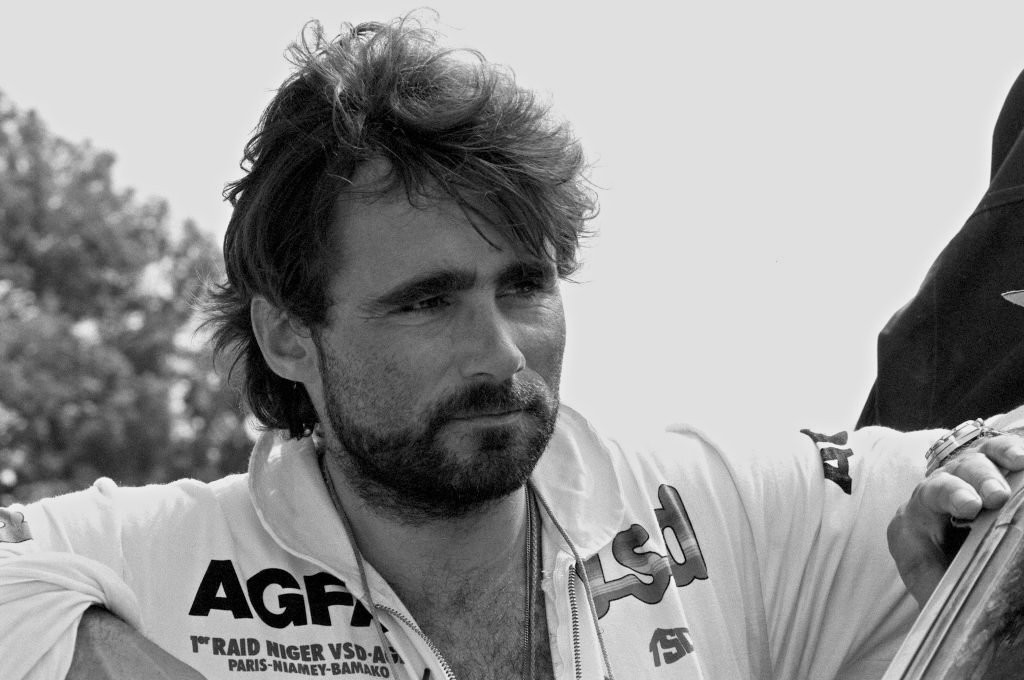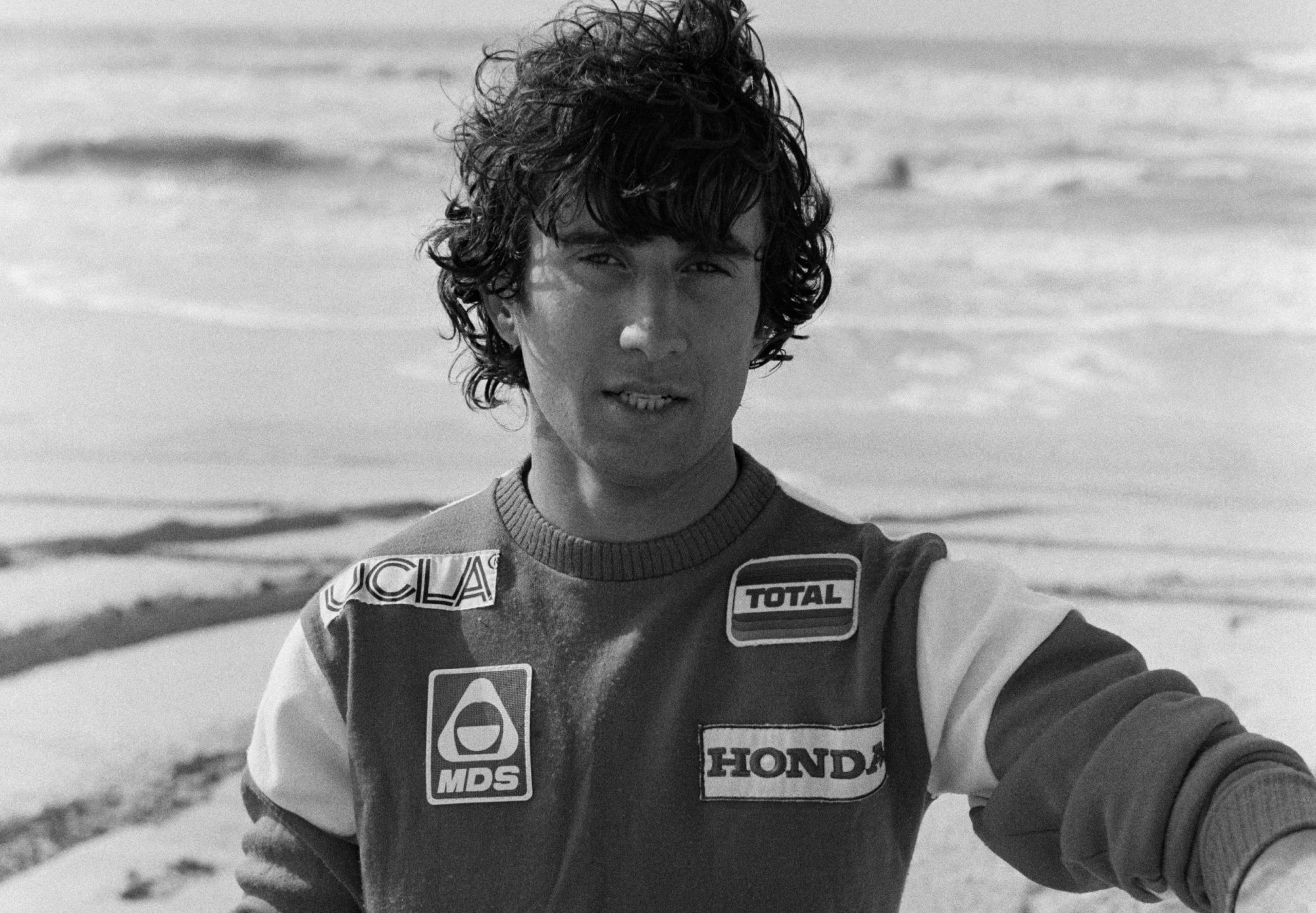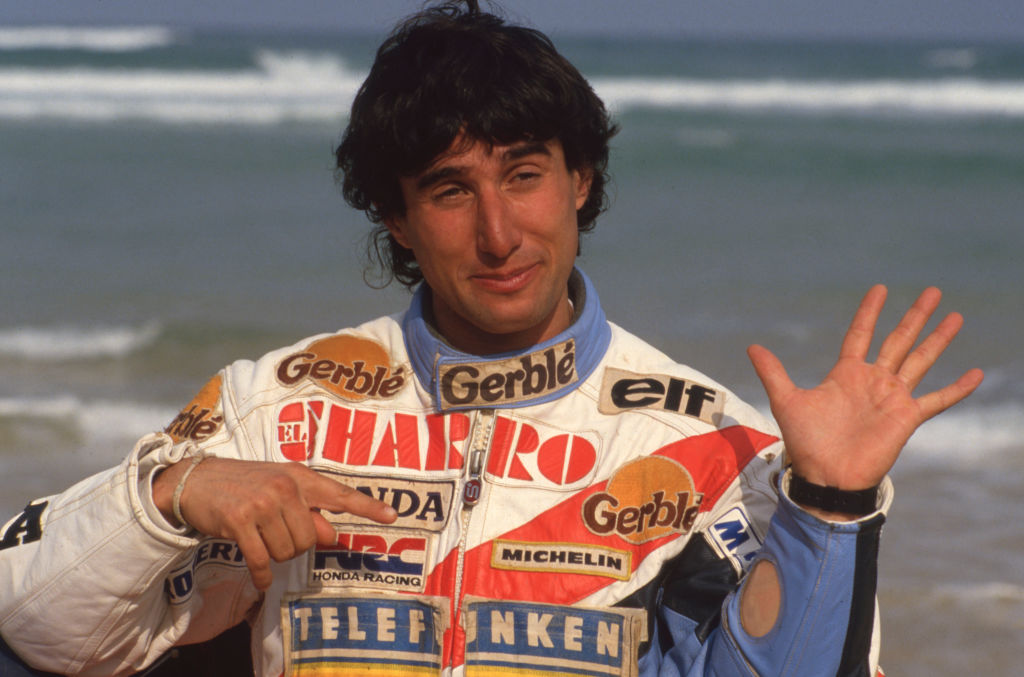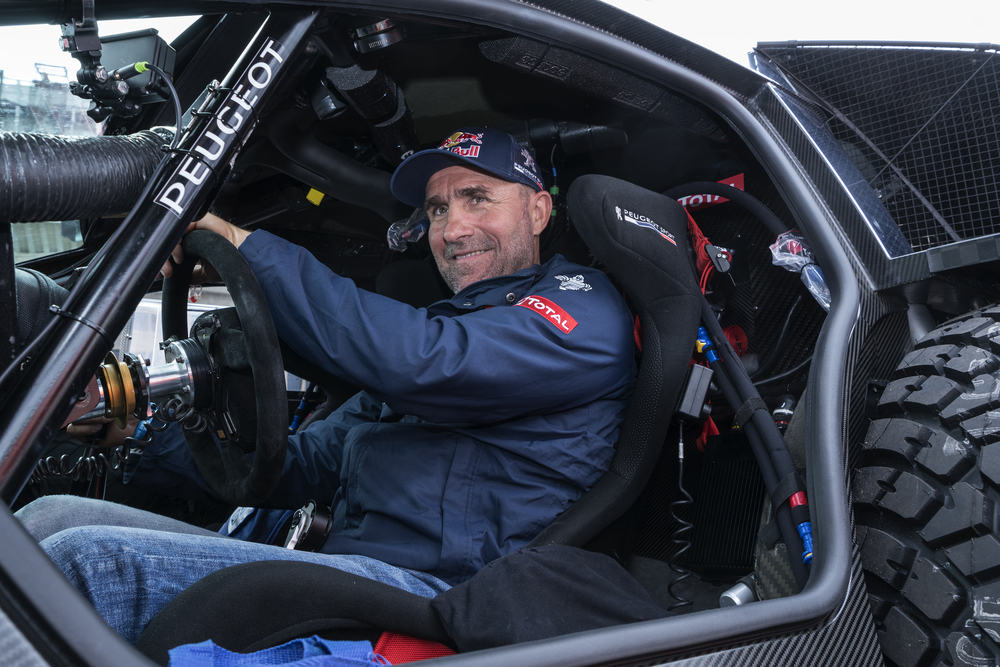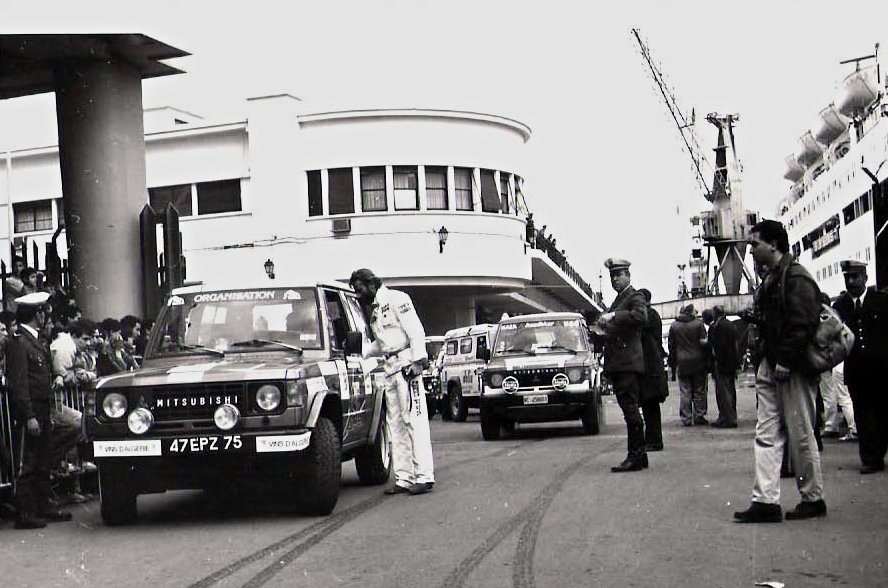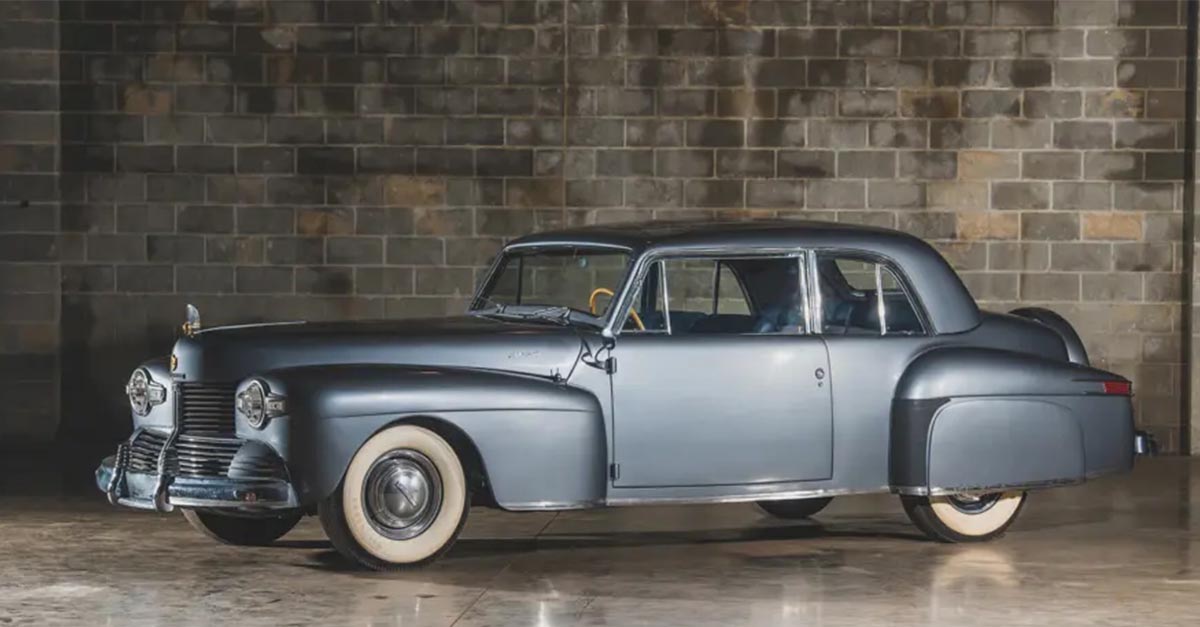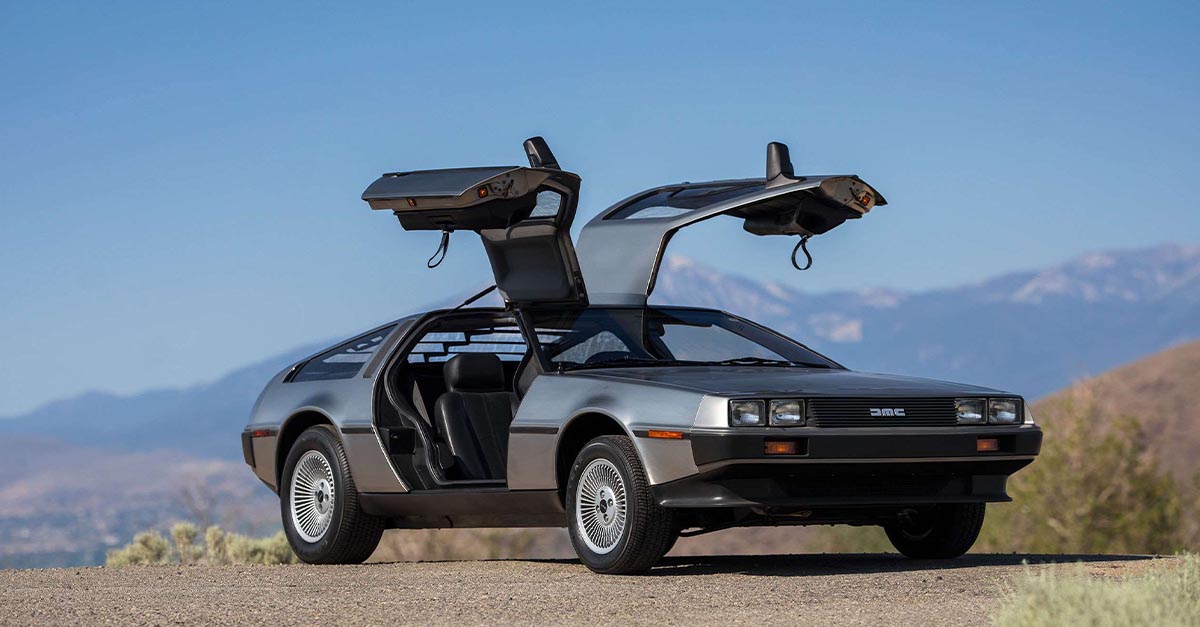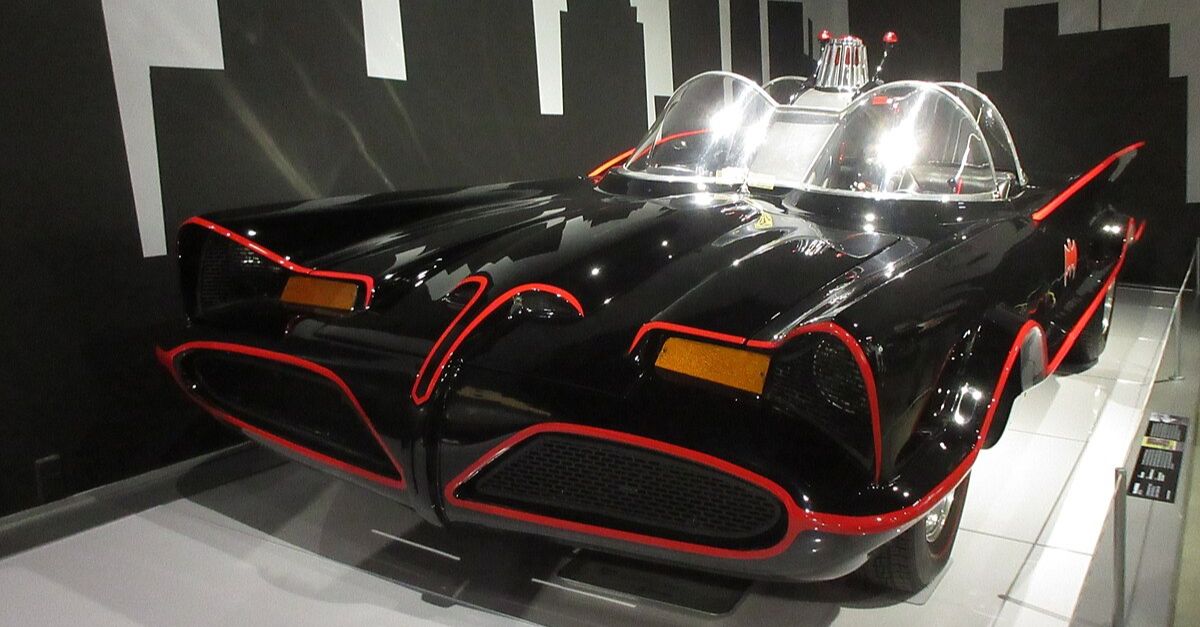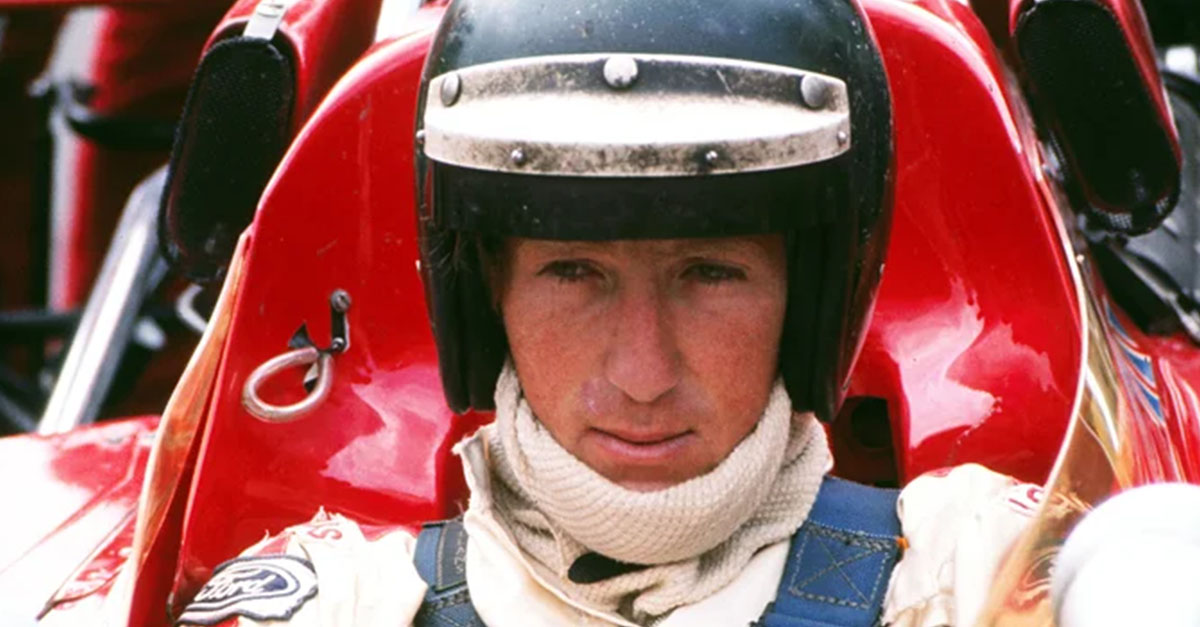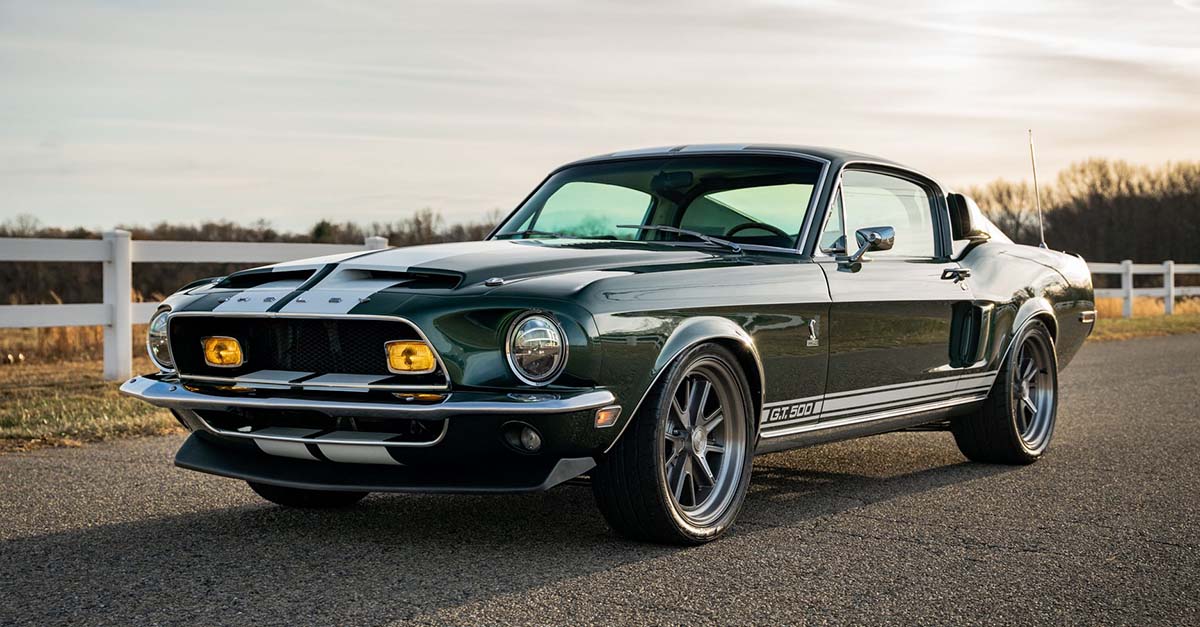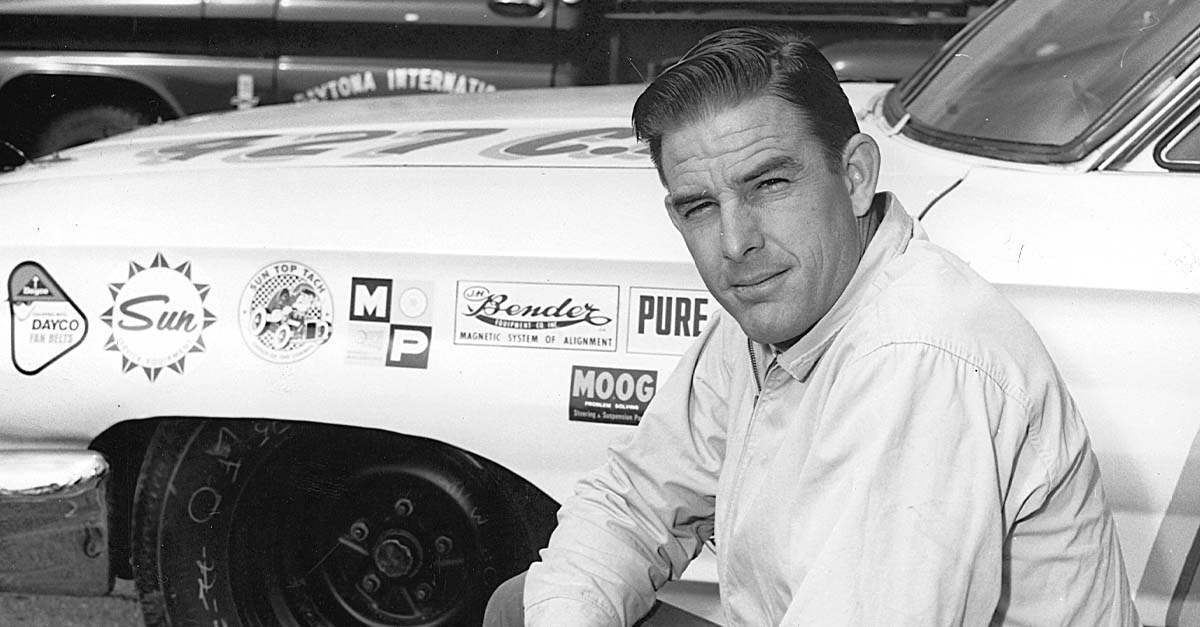The Dakar Rally
The Dakar Rally is one of motorsport's greatest endurance races. It began in 1977 with French motorbike rider Thierry Sabine, who got lost on his motorbike while taking part in another endurance race: Nice to Abidjan. There, he conceptualized a race that would test endurance even further: the Paris to Dakar rally through the deserts of Africa. Let's go over the history of one of motorsport's toughest endurance races.
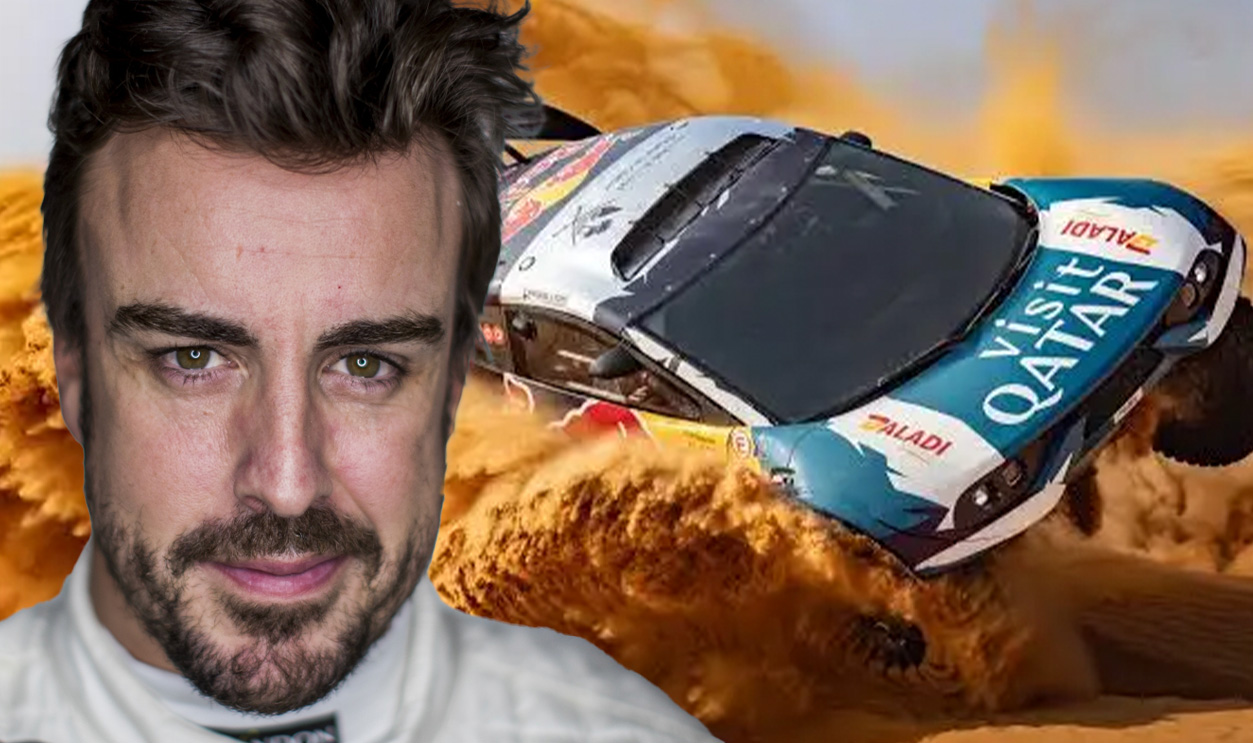
Who Was Thierry Sabine?
Thierry Sabine was a French motorcycle racer who was well-established in the racing world prior to that fateful day in 1977. When crossing the Tchigai Plateau in Niger as part of the Nice to Abidjan Race, now known as the Ivory Coast Rally, he changed the world of motorsport forever.
Getting Lost In The Desert Inspires A New Race
Sabine was on his way to Abidjan from Nice, France, when he got lost in the deserts of Libya. Despite being alone for almost four days without water, Sabine survived after being rescued by locals. Although harrowing, the ordeal gave Sabine the idea for another desert-based race, one unlike anything the world had ever seen.
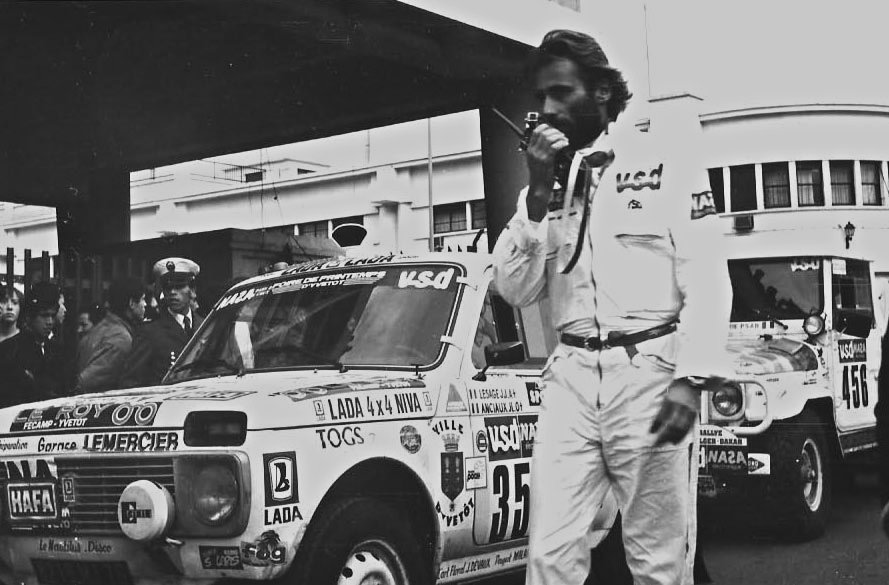 Yelles M.C.A., CC BY-SA 3.0, Wikimedia Commons
Yelles M.C.A., CC BY-SA 3.0, Wikimedia Commons
The Idea
The idea for the first Dakar Rally was simple: a journey of over 6,200 miles from Paris to Dakar, Senegal (via a transit on a ship across the Mediterranean Sea), going through the deserts of Algeria, Niger, and Mali, before ending up in the Senegalese capital of Dakar. Sabine's motto for the race was: "A challenge for those who go, a dream for those who stay behind".
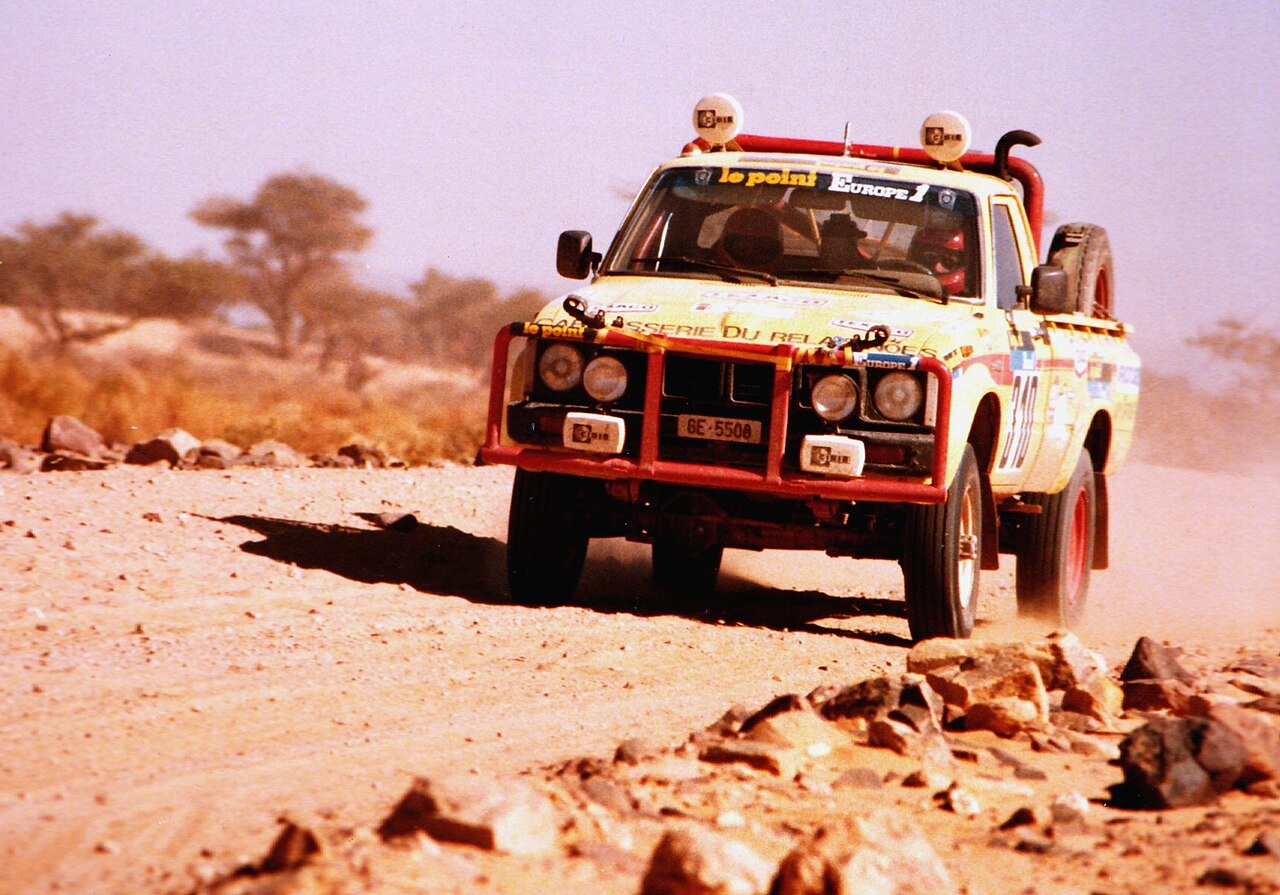 NPiquet81, CC BY-SA 4.0, Wikimedia Commons
NPiquet81, CC BY-SA 4.0, Wikimedia Commons
The Race Wasn't Just Open To Cars
Inspired by the Nice-Abidjan Race that featured motorbikes, rally cars, and buggies, the Dakar Rally was also an open event to other types of desert-faring vehicles. Of the 182 competitors, 80 drove rally-style cars, 12 turned up in trucks, and 90 were motorcyclists.
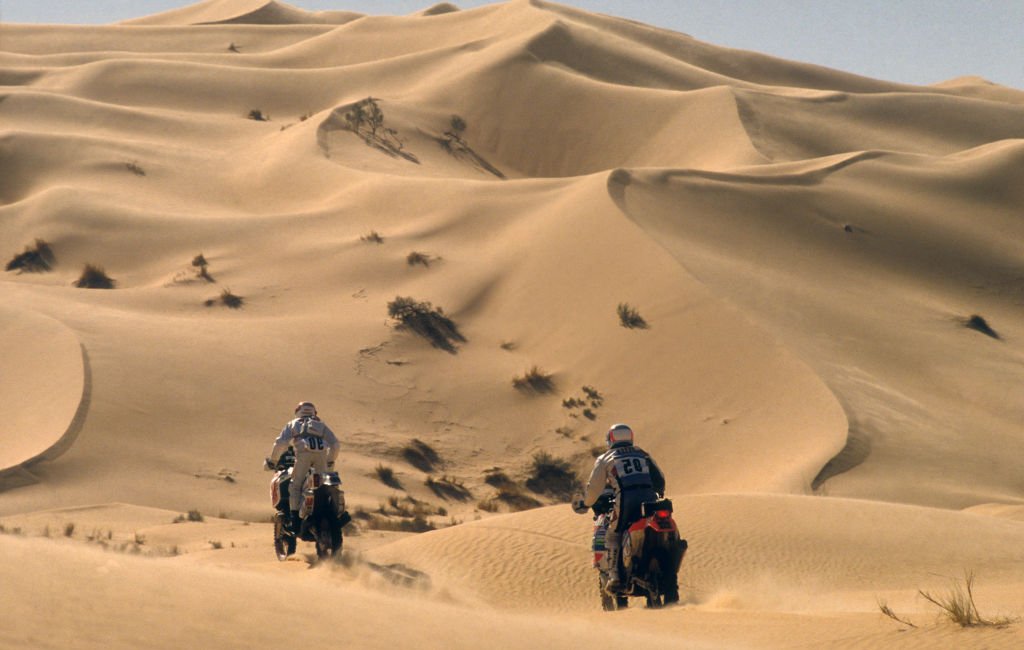 Pool DENIZE/FRANCOLON, Getty Images
Pool DENIZE/FRANCOLON, Getty Images
The "Special" Legs
While most of the inaugural race was to be an open-ended free-for-all race to Dakar, there were a certain number of "special legs", wherein specific conditions made it too challenging for certain vehicles to compete. These stages were timed events where the terrain was almost exclusively off-road. In the inaugural race, this amounted to almost 1,900 miles of the overall distance.
 Petertumble, CC BY-SA 4.0, Wikimedia Commons
Petertumble, CC BY-SA 4.0, Wikimedia Commons
The Inaugural Race Begins
Over 182 competitors turned up for the very first Dakar Rally, which began at the starting line on the Place du Trocadéro in Paris on Boxing Day, 1978. Despite being characteristically different, no separate classes were created for the different vehicles, so they all raced with one goal in mind: reach Dakar first.
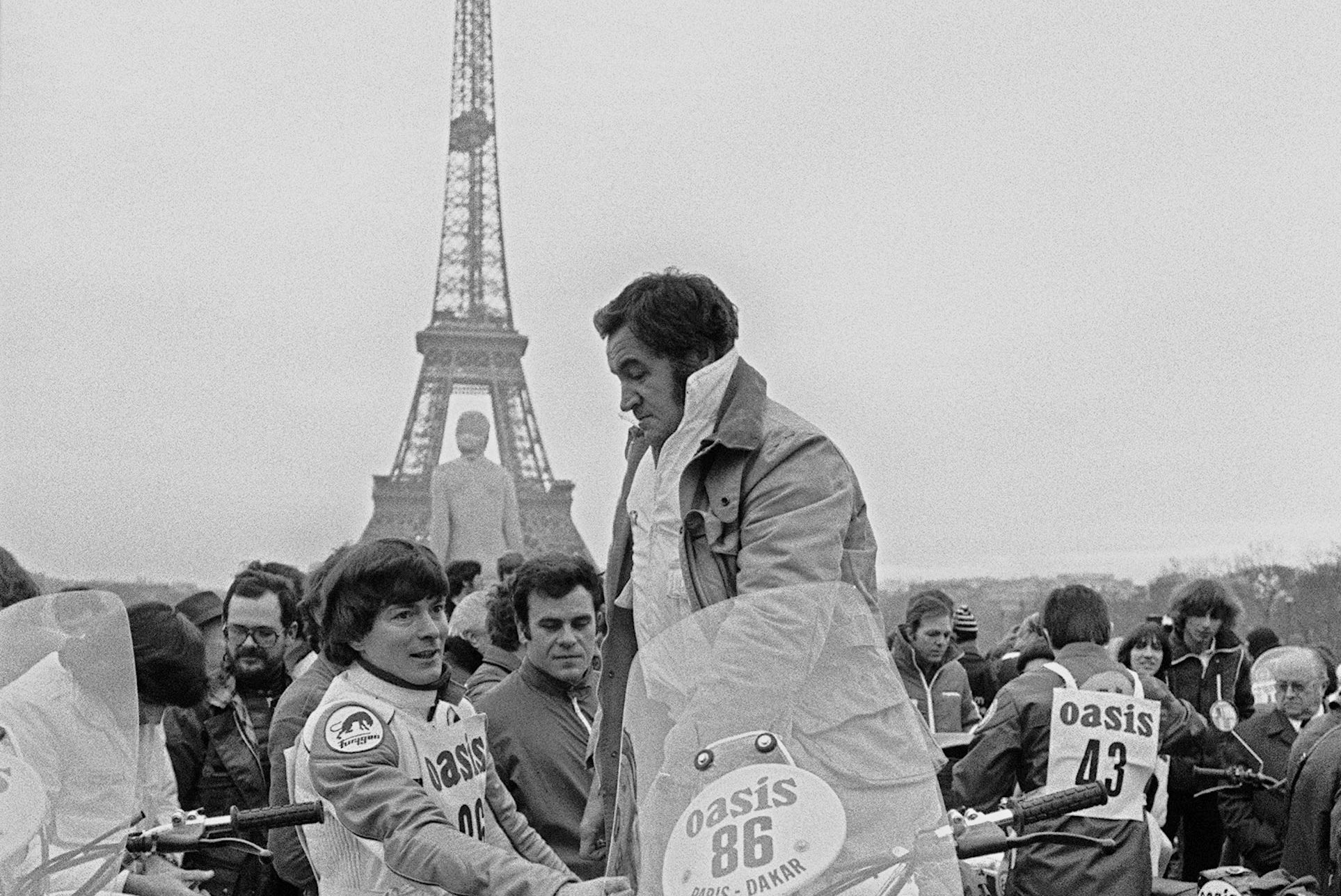 GEORGES BENDRIHEM, Getty Images
GEORGES BENDRIHEM, Getty Images
A Journey Across The Ocean
After leaving Paris, the competitors drove south to Marseille before hopping on a huge container ship that took them across the Mediterranean Sea, landing in the port of Algiers, the capital city of Algeria—the former French colony. They spent 24 hours at sea.
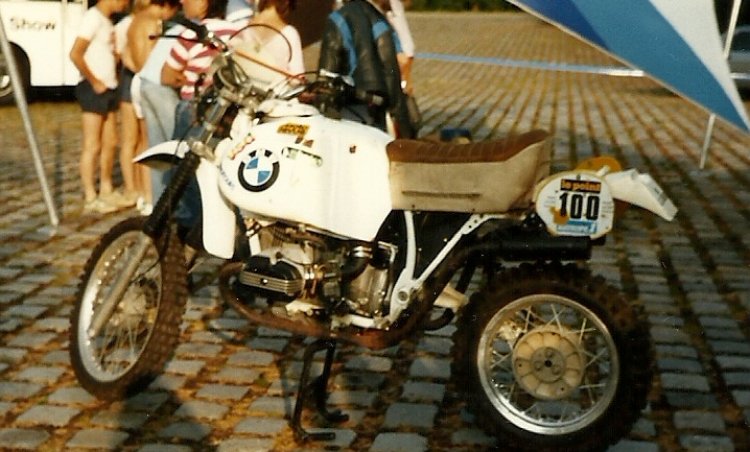 Pierotreruote, CC BY-SA 3.0, Wikimedia Commons
Pierotreruote, CC BY-SA 3.0, Wikimedia Commons
The Gruelling Race Hits The Vast Desert
Getting from Paris to Marseille was the easy bit. Crossing the ocean? A piece of cake. The real endurance race had only just begun: Who could travel some 4,500 miles through desert terrain with limited supplies and make it to Dakar? Once out of the Algerian capital, a virtual straight line through Algeria awaited.
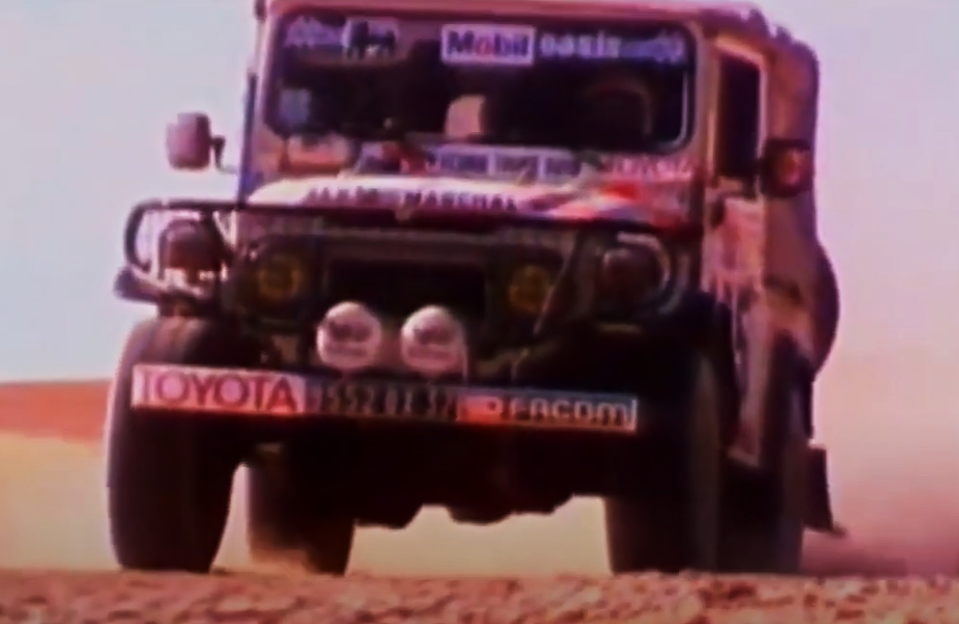 Paris Dakar Rally 1979, Magnetic Vision
Paris Dakar Rally 1979, Magnetic Vision
Braving Difficult Conditions
Without any of the trappings of modern technology, the 1979 Dakar Rally attendees had to deal with using paper road maps, brave scorching 40+℃ heat, as well as equipment not purpose-built for the extreme terrain of miles of desert. Despite the presence of race marshals, many riders and drivers soon exited the race, either due to mechanical failures or crashes and injuries.
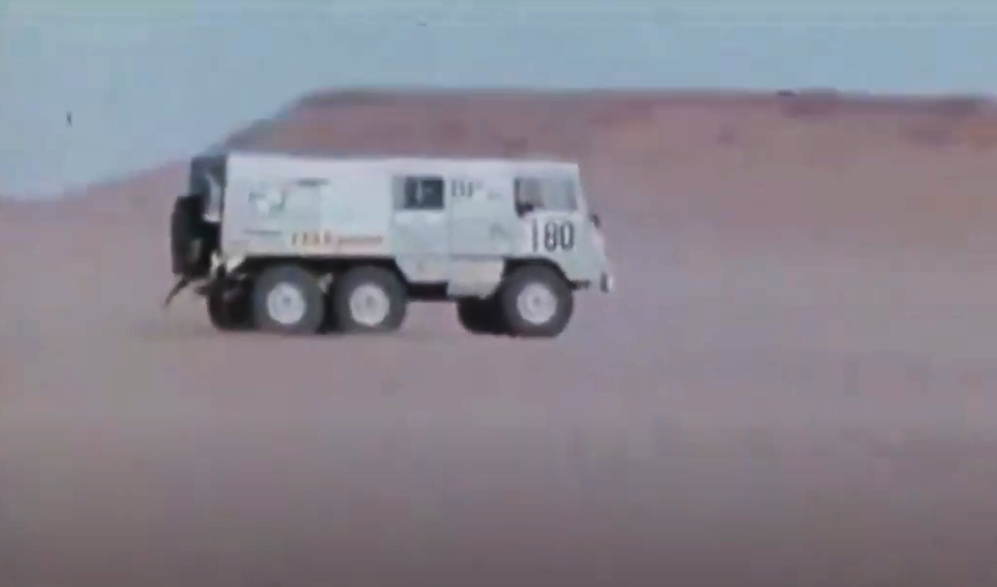 Paris Dakar Rally 1979, Magnetic Vision
Paris Dakar Rally 1979, Magnetic Vision
A Few Strange Entrants
Given that Thierry Sabine wanted to encourage as many entrants as possible into his new race format, the race was open to almost anyone. This meant that non-professional racers could join the pack—and they did. Entrants included a French teacher, a 39-year-old journalist named Philippe Hayat, and a technician from Renault named Daniel Nolan.
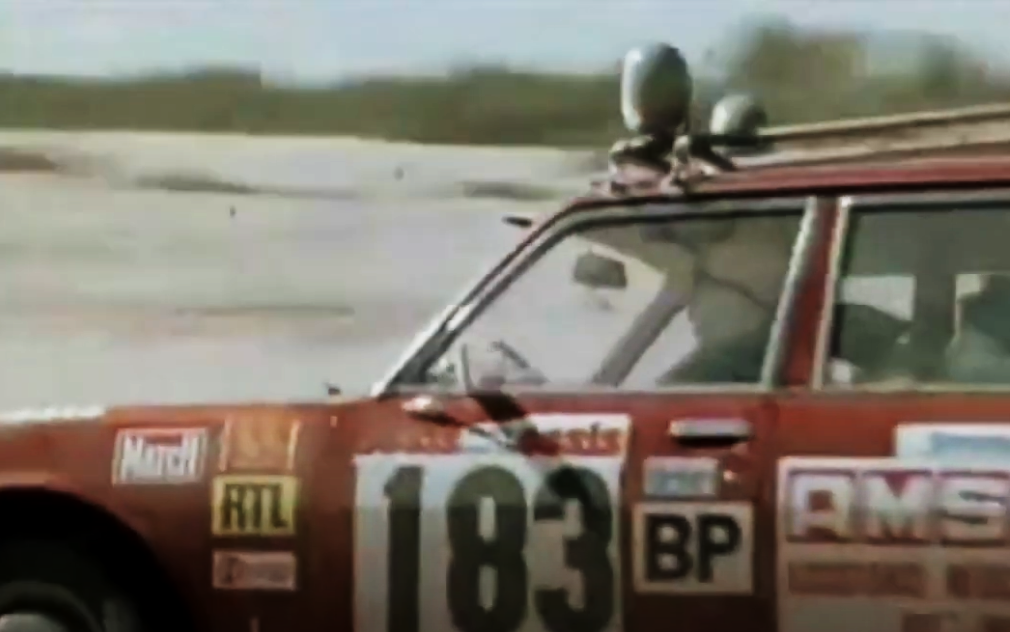 Paris Dakar Rally 1979, Magnetic Vision
Paris Dakar Rally 1979, Magnetic Vision
Daniel Nolan Drives An Old Renault
If you're an amateur racing driver entering a race surrounded by professional racing drivers, you may as well make it memorable. This must have been the theory that Daniel Nolan went with as he drove a 1923 Renault KZ 11 CV, a mid-sized family car with a four-cylinder, 2.1L engine. Obviously, the Renault wasn't going to win anything: it finished 71st overall.
 Paris Dakar Rally 1979, Magnetic Vision
Paris Dakar Rally 1979, Magnetic Vision
Female Race Entrants At Dakar
Unlike 24 Hours At Le Mans, the Dakar Rally didn't discriminate against female entrants—there were seven female racers that ended up at the start line in Paris. Unfortunately, 45 miles into the race, Corinne Koppehague struck a fast-braking car from behind, fracturing her foot. Koppehague bravely rode some 500 miles on a broken foot before packing it in.
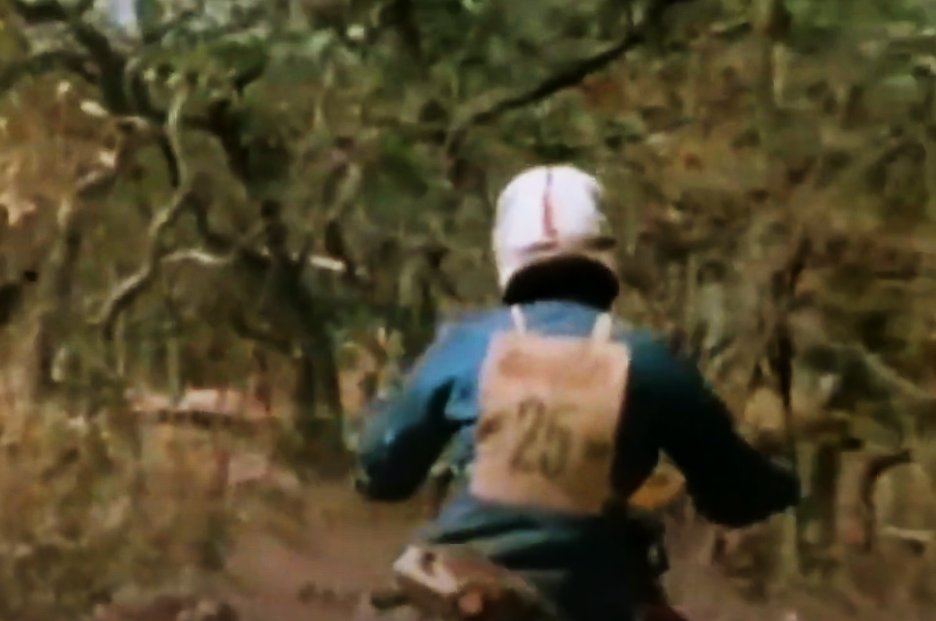 Paris Dakar Rally 1979, Magnetic Vision
Paris Dakar Rally 1979, Magnetic Vision
Cyril Neveu Takes The Lead In Reggane, Algeria
French motorcyclist Cyril Neveu took the lead in Reggane, Algeria. After a harrowing race out of Algiers, he and another rider on a Yamaha XT500 would lead the pack all the way out of Algeria, only briefly losing the lead in a controversial special stage between Tamanrasset, Algeria and Agadez, Niger.
Taking The Wrong Way Around
In Tamanrasset, Algeria, Thierry Sabine watched on in horror as the most important race of his career took a dangerous turn when every single racer took the wrong fork in a road. They were likely following journalists who had gone out ahead of the pack. This wrong turn went somewhat hilariously south for a group of eight or nine riders.
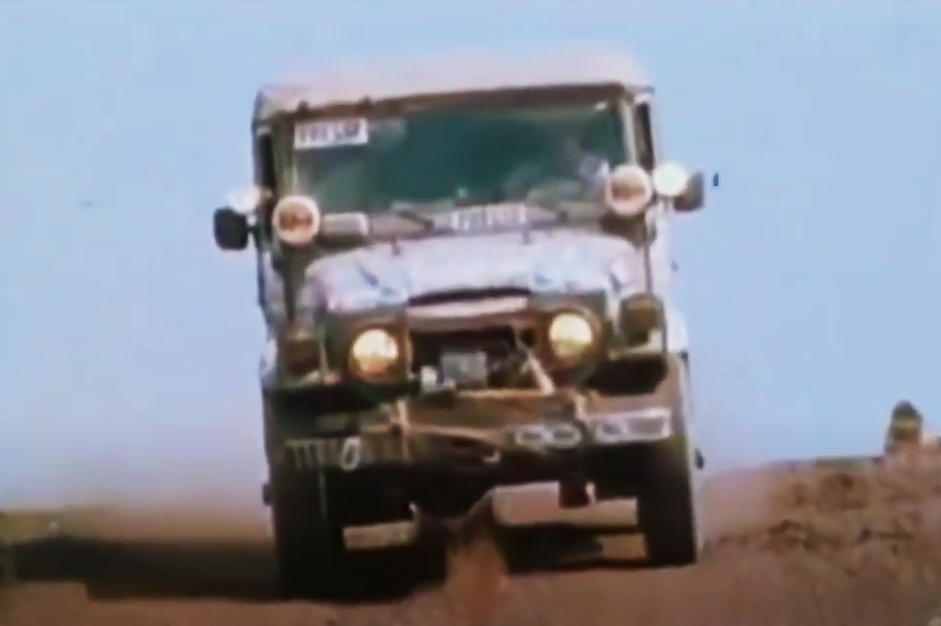 Paris Dakar Rally 1979, Magnetic Vision
Paris Dakar Rally 1979, Magnetic Vision
The Japanese Golfer Encounter
In a translated excerpt from a 2009 interview with two French riders, we learned that Alain Martin-Rabaud and Christian Rayer had both taken a wrong turn, too far southwest of Agadez. Struggling to find their way and far away from anyone, they stumbled upon a group of Japanese golfers in an armed encampment along the desert roadway.
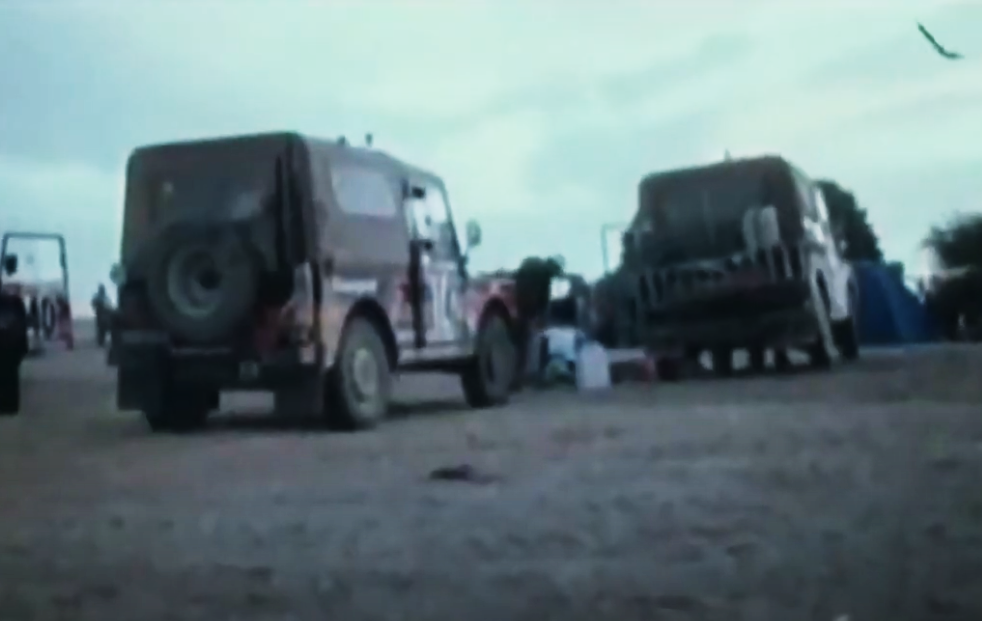 Paris Dakar Rally 1979, Magnetic Vision
Paris Dakar Rally 1979, Magnetic Vision
The Japanese Golfer Encounter (Cont'd)
Realizing they were running low on fuel, the pair asked the Japanese golfers for some fuel. They initially refused, but relented after an epic comeback from Martin: "The Land of the Rising Sun’s reputation would be tainted if the world learned that several honourable Japanese countrymen refused assistance in the open African desert in the middle of an internationally recognized competition". Ouch.
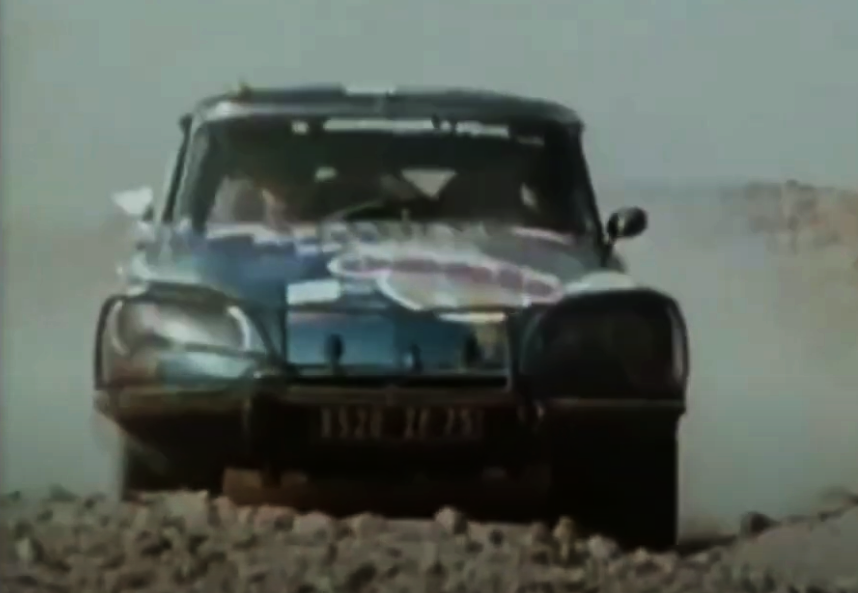 Paris Dakar Rally 1979, Magnetic Vision
Paris Dakar Rally 1979, Magnetic Vision
Further Difficulty From Agadez To Niamey, Niger
While scouting the route for Dakar one year earlier, Thierry Sabine had already decided on the road from Agadez to Niamey, Niger—a distance of some 700 miles. What he couldn't have banked on was the deterioration of the roadways. Holes as large as bathtubs and overgrown vegetation along the roadway made passing almost impossible.
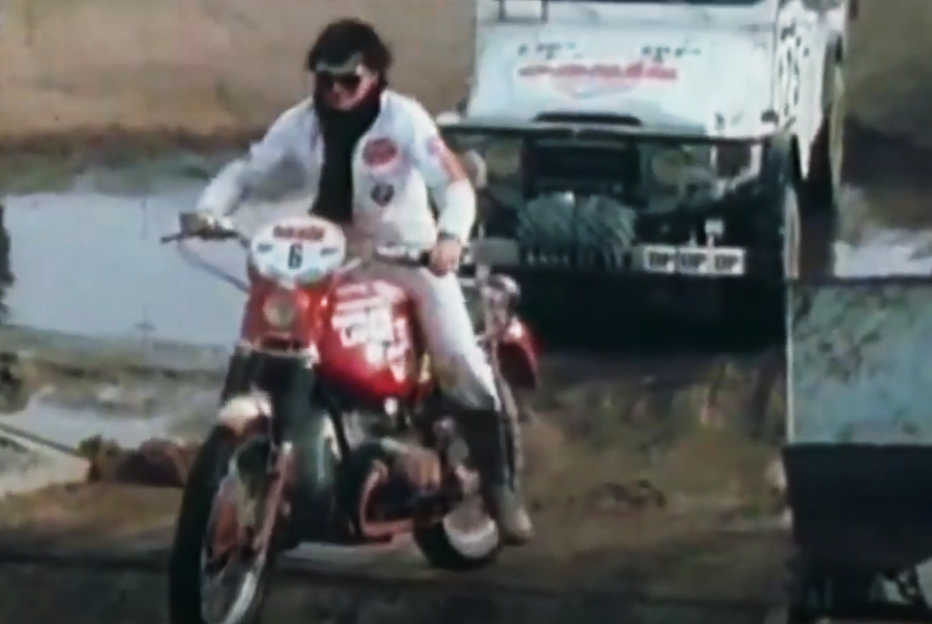 Paris Dakar Rally 1979, Magnetic Vision
Paris Dakar Rally 1979, Magnetic Vision
Injuries Abound During This Stage
Further injuries to the Yamaha bike racing team occurred in this section of the race, when Jean-Claude Olivier fell off and fractured his wrist after becoming entangled with then-leader Cyril Neveu. Later in the stage, another Yamaha rider, Rudy Potisek, fell off and broke his leg.
 Rikita, CC BY-SA 3.0, Wikimedia Commons
Rikita, CC BY-SA 3.0, Wikimedia Commons
Medical Assistance Required
Despite the remote nature of the race, medical assistance vehicles were lent by Peugeot. A pair of Peugeot 504s were commissioned for the race, with extra-large tires and medical supplies on-hand. However, there were a number of serious injuries that required helicopter-assisted evacuation.
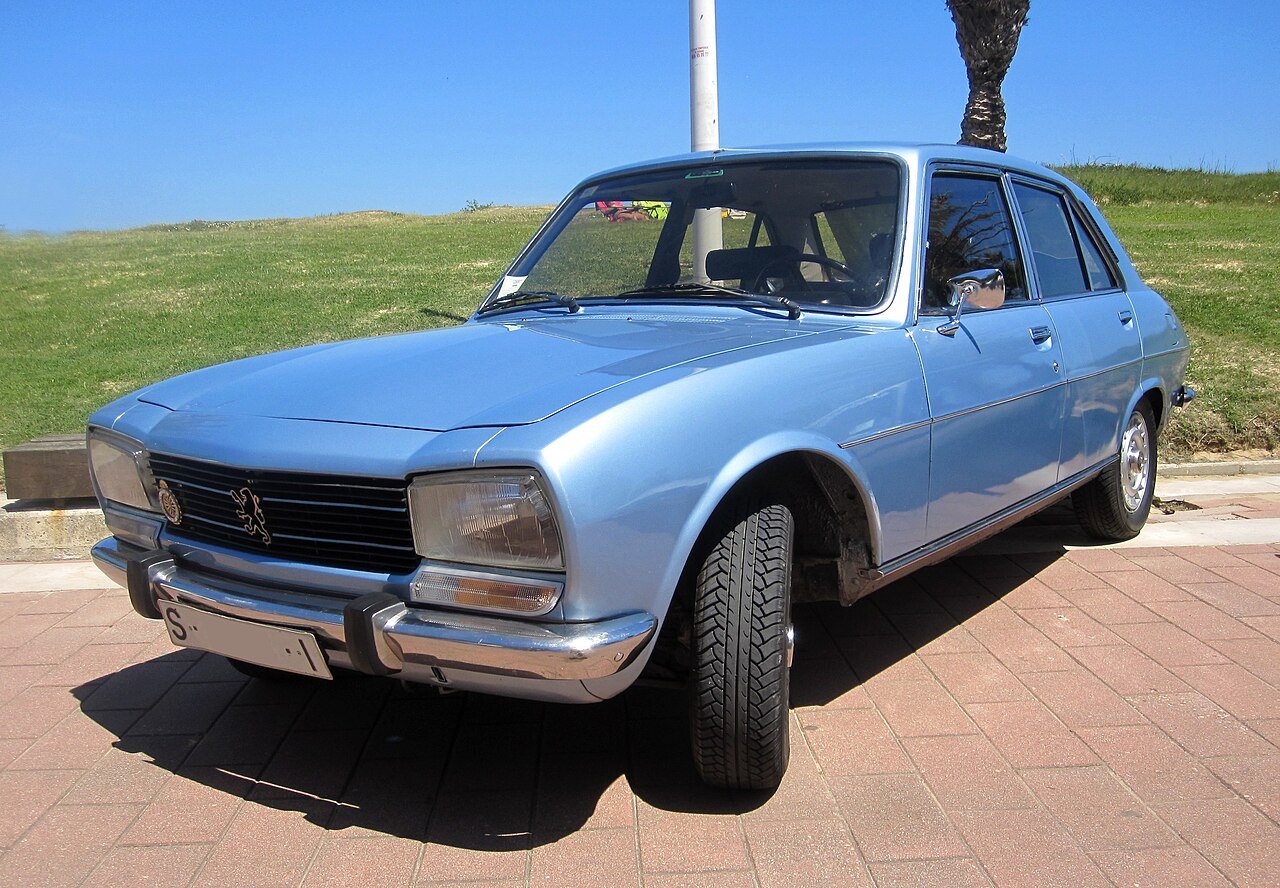 Spanish Coches, CC BY 2.0, Wikimedia Commons
Spanish Coches, CC BY 2.0, Wikimedia Commons
One Rally Driver Passes Away
Unfortunately, the inaugural 1979 Dakar Rally did not go off without incident. One rider on a Yamaha motorcycle, Patrice Dodin, passed away after sustaining a skull fracture in Agadez, Niger, after falling off his bike while adjusting his helmet.
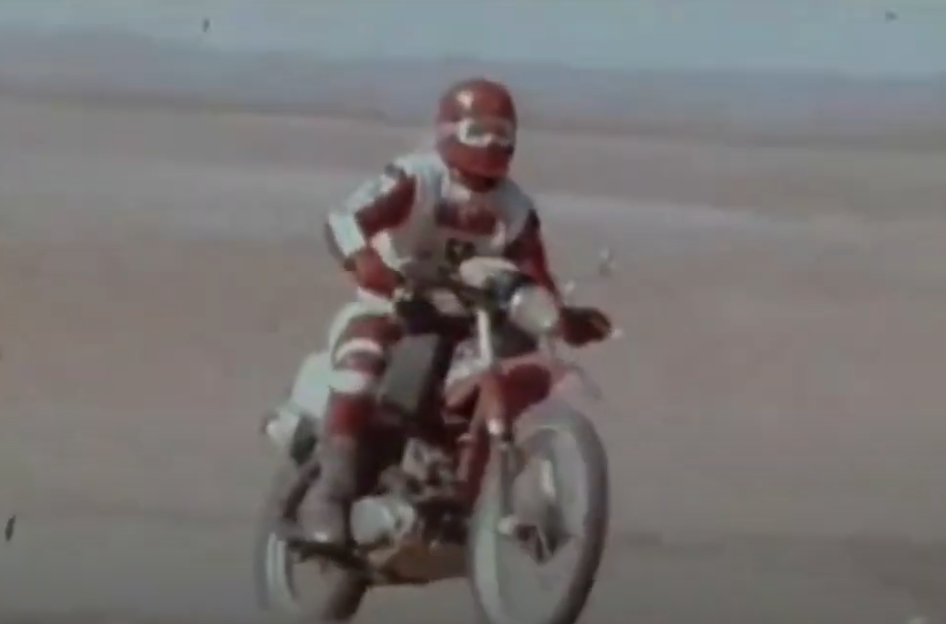 Paris Dakar Rally 1979, Magnetic Vision
Paris Dakar Rally 1979, Magnetic Vision
A Neutral Day To Cross The Border
The fifth stage of the race saw all racers safely cross the border between Niger and Mali. Of particular note is that the old 1927 Renault KZ 11 CV was still racing, and the team of non-professional driving misfits was, incredibly, still in the race.
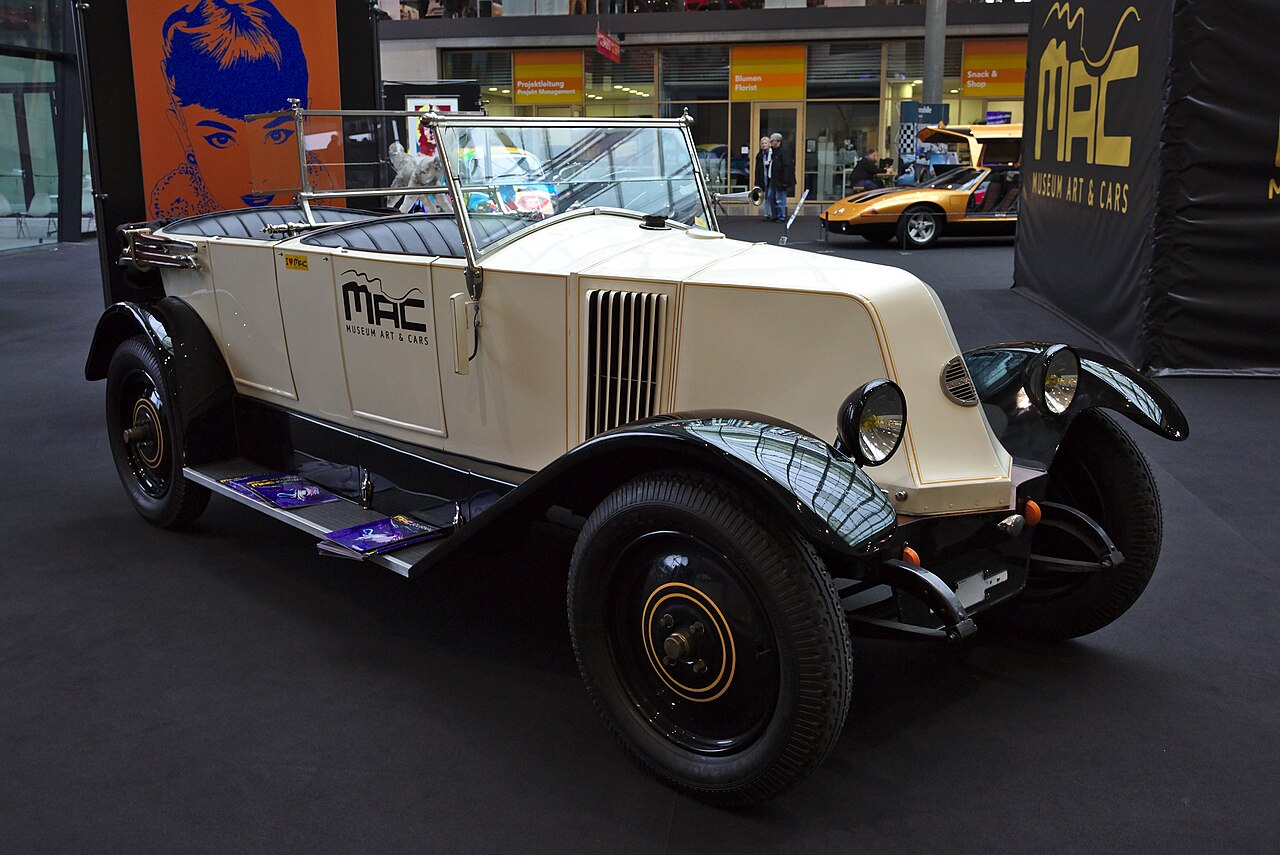 Alexander Migl, CC BY-SA 4.0, Wikimedia Commons
Alexander Migl, CC BY-SA 4.0, Wikimedia Commons
Patrick Schall Falls, Evaporating A 19-Minute Lead In Seconds
Race favorite, German motorcyclist Patrick Schall, had built up an astonishing 19-minute lead on second-place Cyril Neveu, but had a hard fall in Gao, en route to Bamoko, Mali, in the sixth stage of the race. This allowed Cyril Neveu to overtake after Schall fractured his finger.
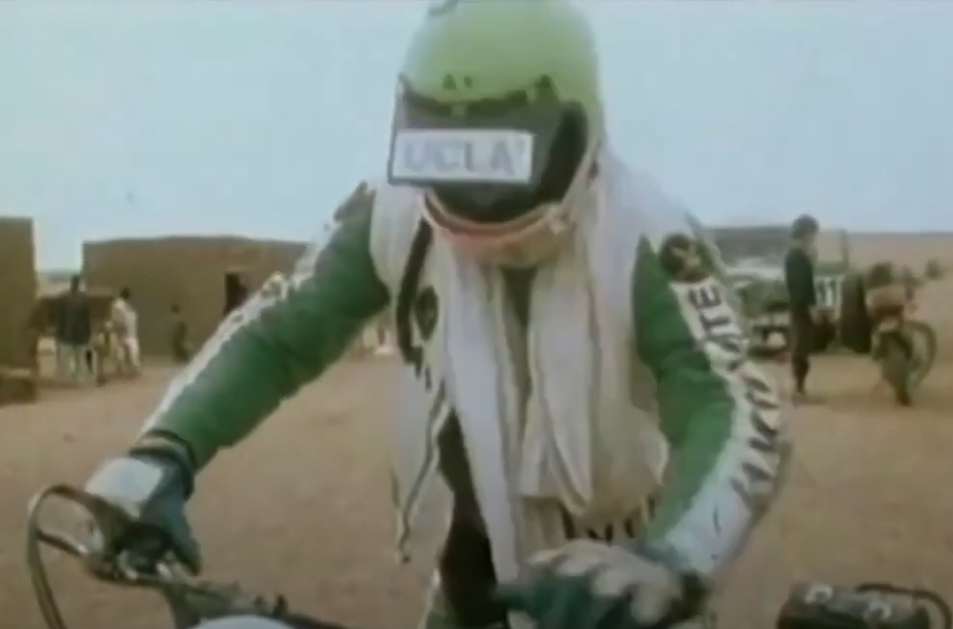 Paris Dakar Rally 1979, Magnetic Vision
Paris Dakar Rally 1979, Magnetic Vision
The Final Leg: Nioro To Dakar
With more of the field coming up with engine problems, including an 18-year-old racer who had to drop out on the final leg due to engine problems, Cyril Neveu established a clear lead against the pack, crossing the finish line and becoming King of the Desert. In 19th place, but first among the female racers, was Martine de Cortanze.
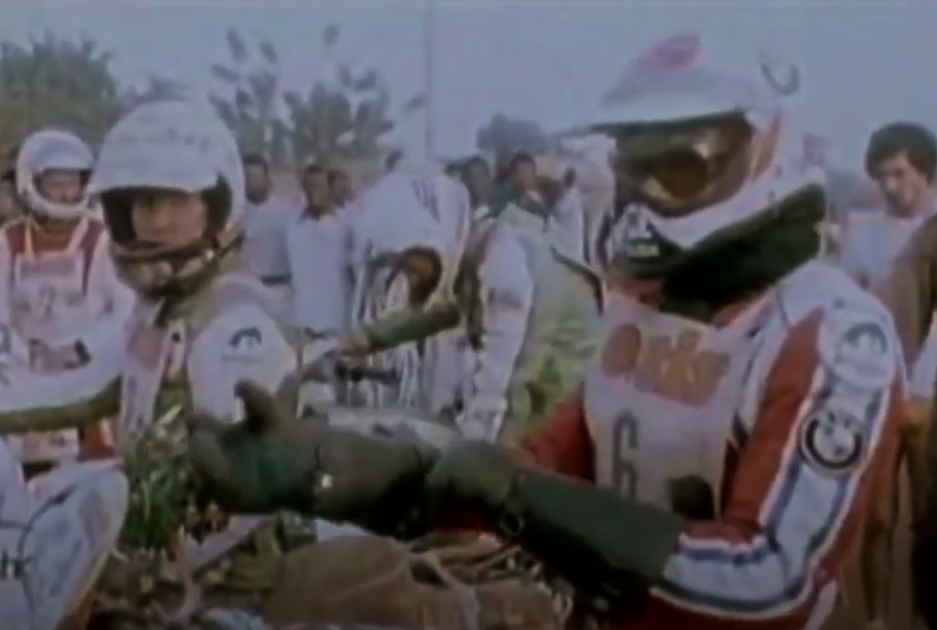 Paris Dakar Rally 1979, Magnetic Vision
Paris Dakar Rally 1979, Magnetic Vision
A Motorcyclist Wins Dakar
Cyril Neveu who would go on to cross the finish line of the 1979 Dakar Rally in Dakar, Senegal aboard a Yamaha 500 XT, taking the lead from fellow Yamaha racer Patrick Schaal, after he fell and fractured his finger. Another French racer, Jean-Claude Morellet was holding on for second place before crashing his BMW motorbike with just 200 miles left to go in the race.
The Dakar Rally Update From RTL Media
Each evening, between 8:30 pm and 10 pm, Radio Télévision Luxembourg (RTL) journalist Max Meynier broadcast the current standings of the first ever Dakar Rally to the world over the course of the 18 days of the rally. RTL and Max were one of 20 journalists and 13 radio stations covering the event. Max Maynier would ride in a Toyota Land Cruiser alongside the racers, shooting footage and providing on-air updates.
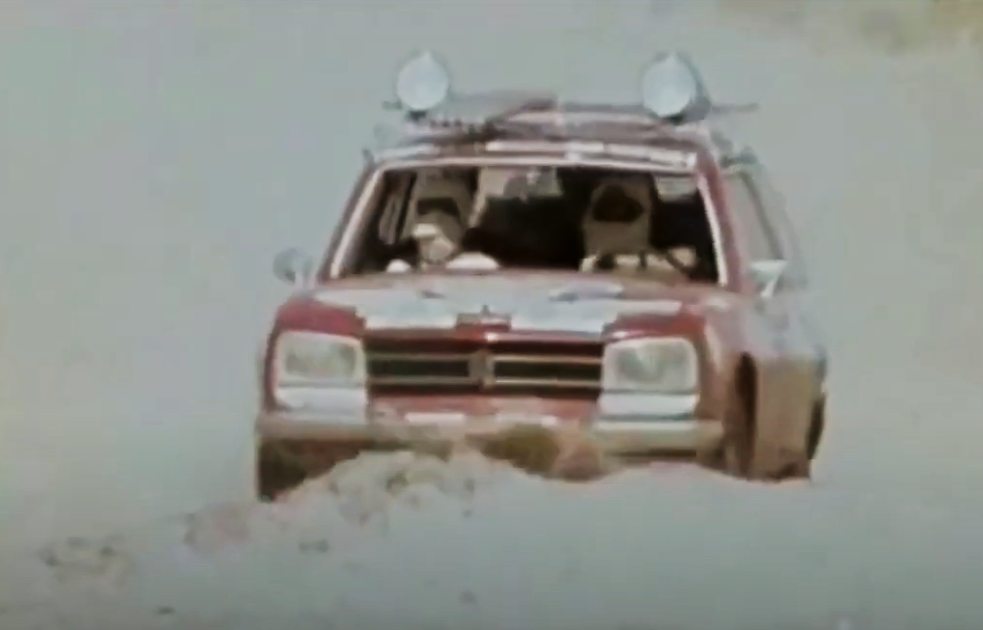 Paris Dakar Rally 1979, Magnetic Vision
Paris Dakar Rally 1979, Magnetic Vision
The Race Grows Annually
After the enormous success of the Dakar Rally in 1979, interest in the race grew exponentially, with 1980 and 1981 editions seeing well over 200 racers partake. By 1983, there were 427 racers and the rally's popularity continued until 1986, when tragedy struck—but more on that later.
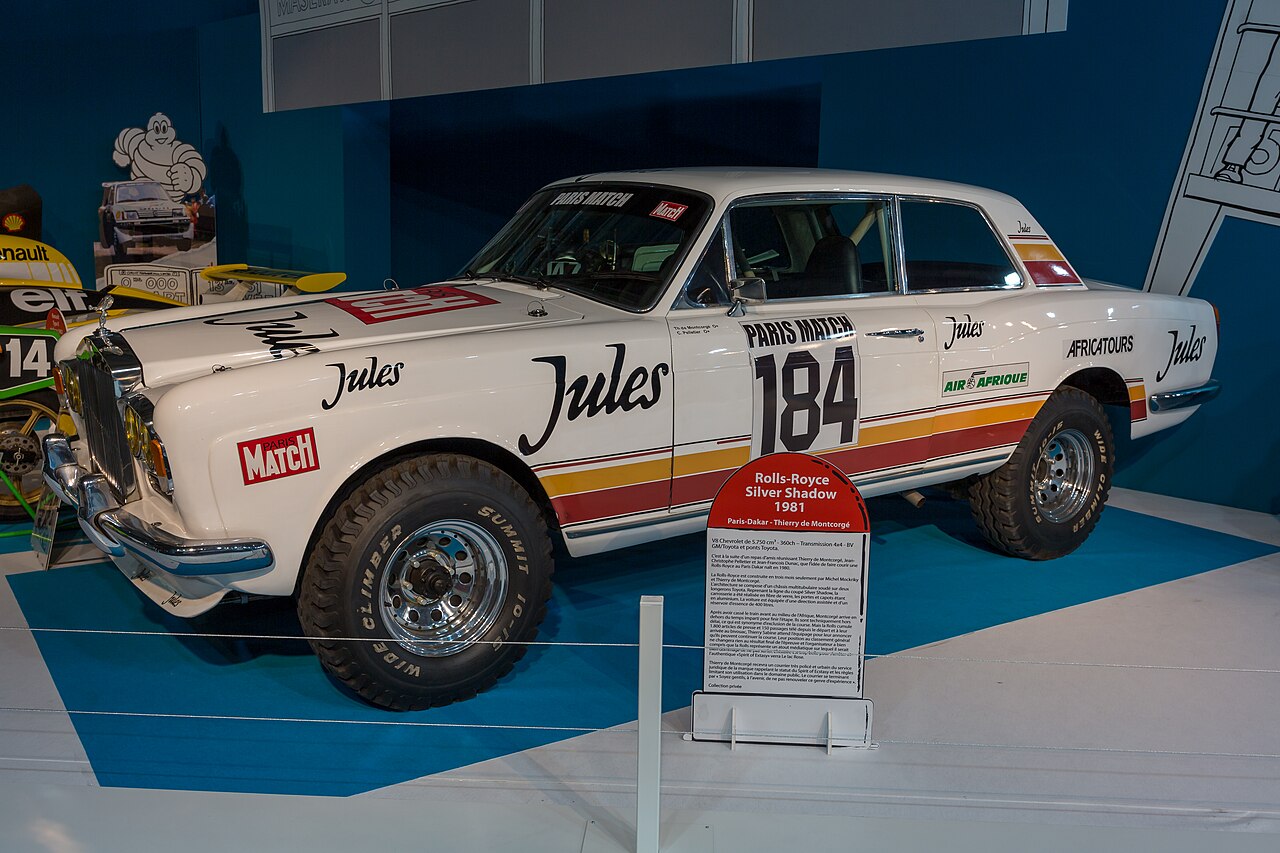 Matti Blume, CC BY-SA 4.0, Wikimedia Commons
Matti Blume, CC BY-SA 4.0, Wikimedia Commons
The 2000s Marks New Parameters
As popularity increased throughout the 1990s, the 2000s were marked by the introduction of a new finishing point for the Dakar Rally, with 2001 notably being the final time that Dakar was used as the conclusion. It was also the first time that the race was won by a woman: Finnish racer, Jutta Kleinschmidt.
Switching Up The Starting Points
The mid-2000s through 2010s saw the Paris-Dakar Rally course completely scrapped in favor of a new starting point seemingly every year—from the French town of Arras in 2002 to Barcelona in 2005, to switching entire continents for three years. In 2009, the rally moved from Europe to South America, beginning and concluding in Buenos Aires, in a large loop of Argentina.
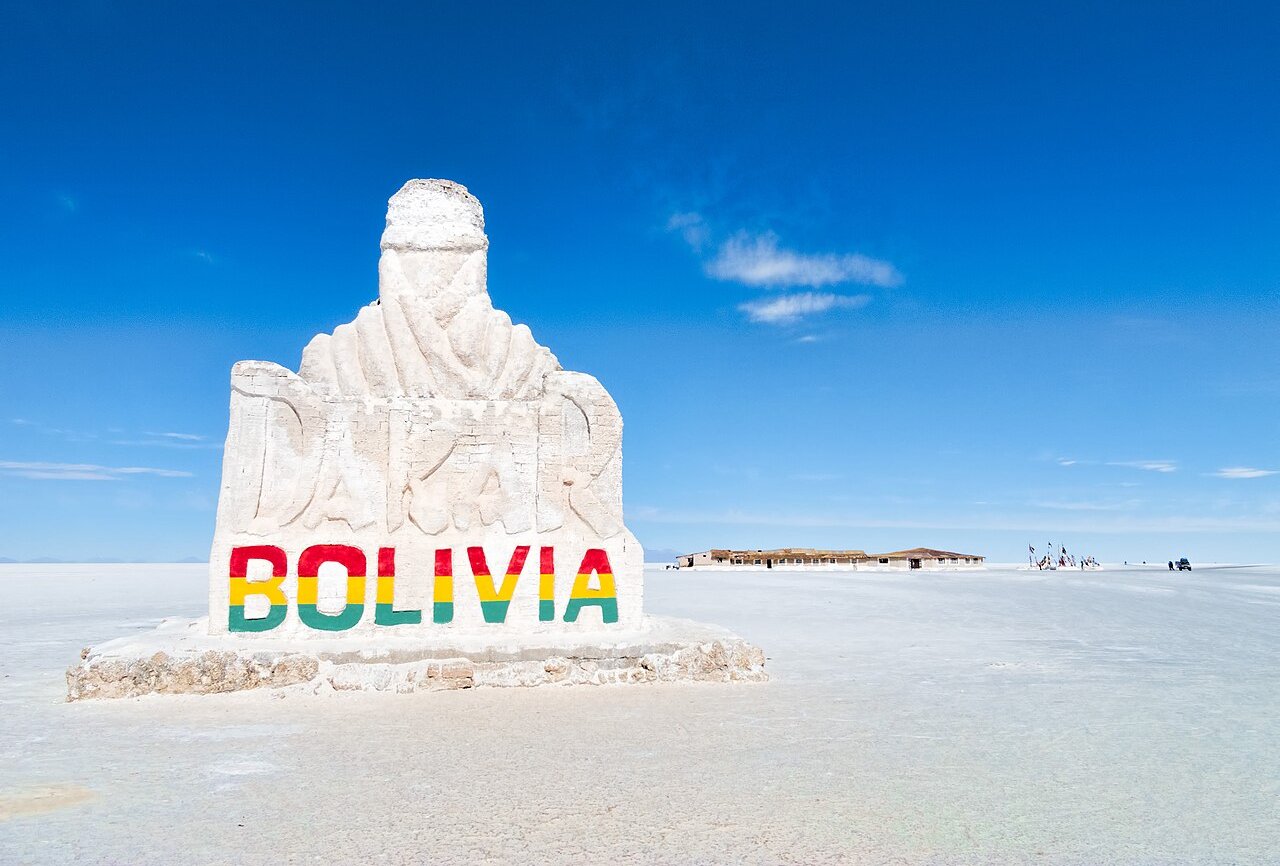 Dan Lundberg, CC BY-SA 2.0, Wikimedia Commons
Dan Lundberg, CC BY-SA 2.0, Wikimedia Commons
Move To Saudi Arabia
In 2020, the rally moved to Saudi Arabia and has been held in the country ever since. Carlos Sainz, father of Formula One racer, Carlos Sainz Jr, won two of the last five Dakar Rallies held in the Kingdom.
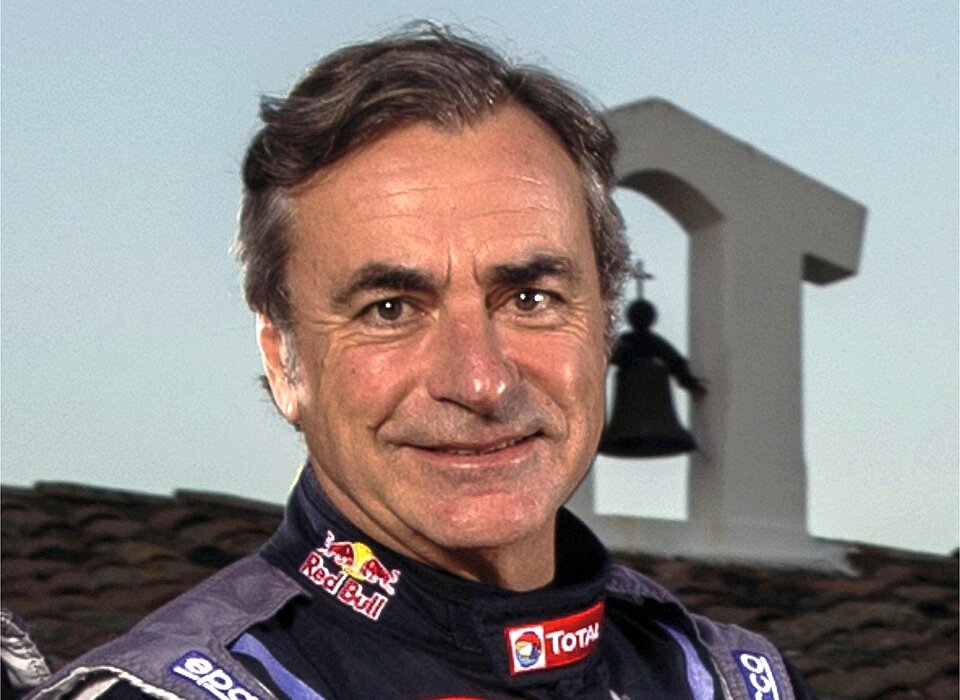 Flavien Duhamel / Peugeot Sport, CC BY-SA 3.0, Wikimedia Commons
Flavien Duhamel / Peugeot Sport, CC BY-SA 3.0, Wikimedia Commons
Dakar Rally's Greatest Records
Let's go over some of the greatest racers and the records they hold in one of the most excruciating endurance races in motorsport—a race so tough that over 50% of entrants don't finish it.
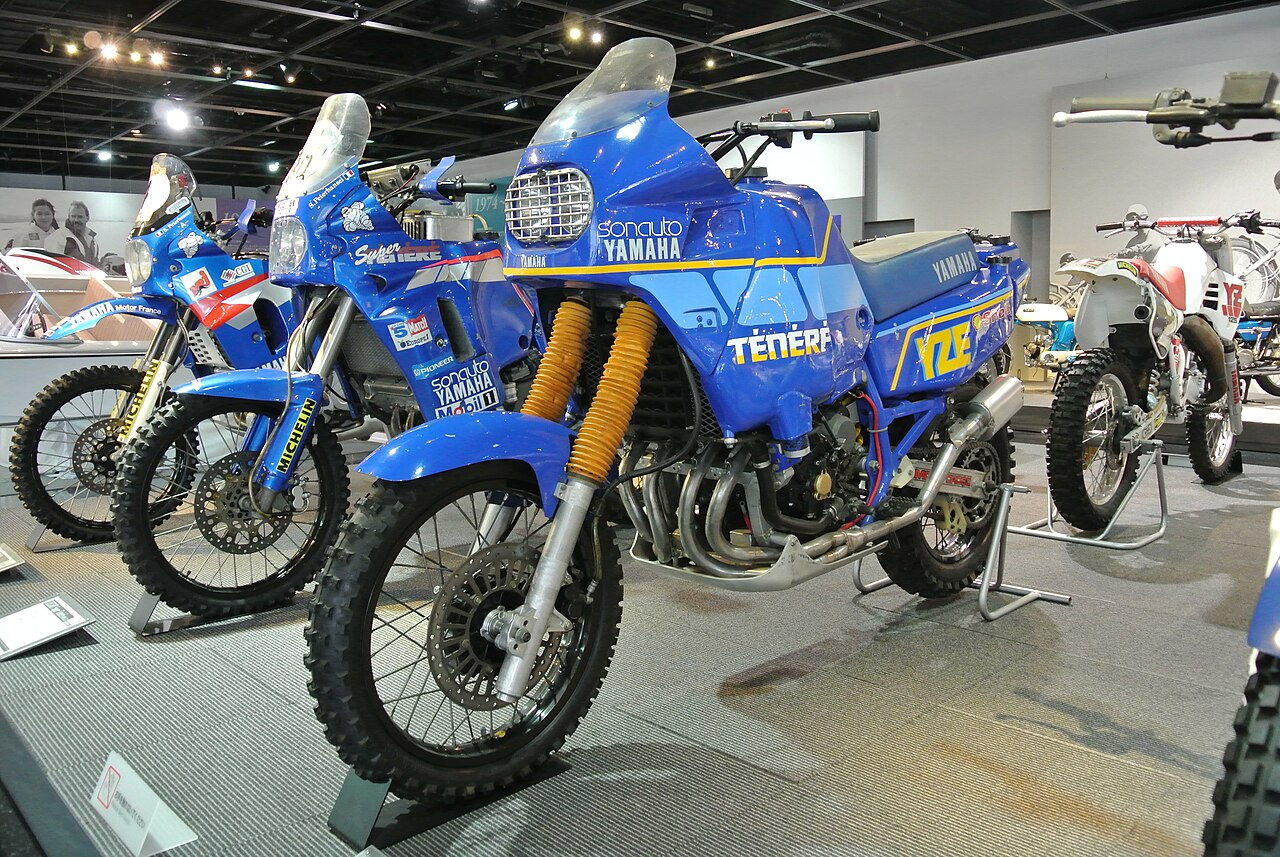 Rainmaker47, CC BY-SA 4.0, Wikimedia Commons
Rainmaker47, CC BY-SA 4.0, Wikimedia Commons
The Rider With The Most Wins: Stephane Peterhansel
French motorcyclist Stephane Peterhansel made his debut in 1988, riding for Yamaha—he finished 18th. Hardly an impressive start. The following year, he finished fourth and in 1990, he was disqualified. But, he set the Dakar world alight in 1991, 1992, and 1993, winning the event three times in a row on a Yamaha motorcycle. He would win again in 1995, 1997, and 1998.
The Most Stage Wins: Cyril Neveu & Stephane Peterhansel
Two racers have won the most stages at the Dakar Rally, sharing 33 wins apiece: the very first winner, Cyril Neveu (racing for Yamaha on a XT-500), and Stephane Peterhansel, who transitioned from motorbikes to cars in 1999.
 Xraid, CC BY-SA 3.0, Wikimedia Commons
Xraid, CC BY-SA 3.0, Wikimedia Commons
The Most Wins By A Manufacturer: KTM
Austrian motorcycle designer, builder, and racing team KTM have crafted an enormously successful legacy at Dakar, with a staggering 20 race wins between 2001 and 2019, 2023 and 2025. Yamaha is a distant second with nine victories.
 Herodotptlomeu, CC BY-SA 4.0, Wikimedia Commons
Herodotptlomeu, CC BY-SA 4.0, Wikimedia Commons
The French Rule The Roost At Dakar
Maybe somewhat predictably, the French are the ruling nationality of victors of the Dakar. 22 French riders have claimed victory since 1979, with the Italians and Spanish claiming six wins for second place. Britain, the US, Australia, Argentina, and Belgium all have two race victories to their names.
 Ana 2016, CC BY-SA 4.0, Wikimedia Commons
Ana 2016, CC BY-SA 4.0, Wikimedia Commons
The Black Year Of Dakar Racing
In 1986, it had been decided that race founder Thierry Sabine would follow along with the race from the air. This would prove to be a fatal mistake. Whether by pilot error or a sandstorm, the helicopter carrying Sabine and four others crashed into a sand dune near Timbuktu, Mali, marking the most fatalities in a single year of the race and a dark day in the history of Dakar.
You May Also Like:
NASCAR's First Victim On The Track
Formula One's Most Controversial Moments
Elton John's Car Collection Hits A High Note


